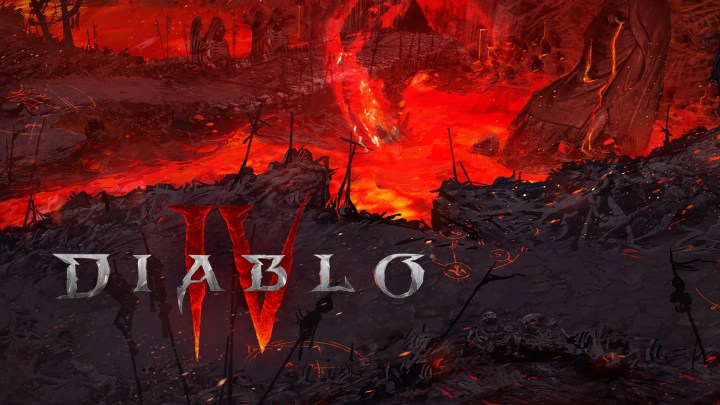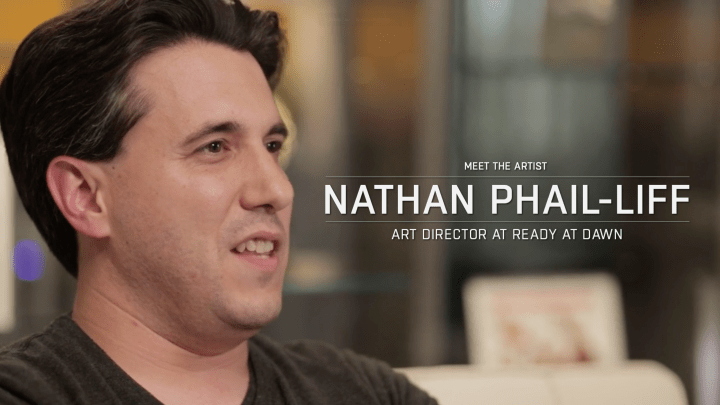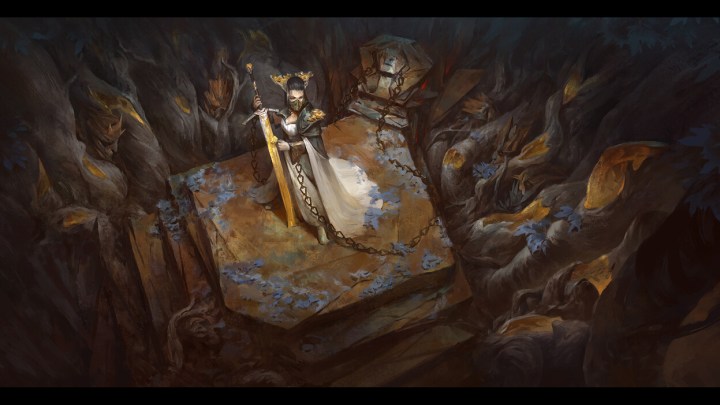Fourteen Job Hunting Tips for Animators From Our Annecy Panel

Looking to land your first job in the animation industry? Check out these top tips for job-seeking animators.
Taken from the Epic-hosted panel ‘From Pixels to Paychecks: Crafting Your Portfolio to Land Animation Job Opportunities’ at Annecy International Animation Film Festival, this blog offers invaluable insights on everything from what hiring masters are looking for in portfolios to the best ways to impress at interviews.
Panelists
- Dave Mullins, CCO of ElectroLeague
- Jimmy Calhoun, Chair of 3D Animation and Visual Effects at the School of Visual Arts, New York City
- Camille Eden, VP of Recruitment and Talent Development at Nickelodeon
Tip #1: Get a foot in the door
You might land your dream animation job as soon as you leave college, but it’s unlikely. Opportunities in the industry can ebb and flow, and you could enter the market in a lean period.
So it can be worth taking a tangential role, particularly if it’s at a company you’d love to work for.
VP of Recruitment and Talent Development at Nickelodeon Camille Eden recounts how she got a job coordinating security at ILM. It wasn’t the art director role she had her heart set on—but the role did see her liaise with people from across the business.
Building those contacts eventually led to an opportunity to try out as a production assistant, and she was in the game.
Getting a foot in the door is only a viable strategy if you put in the hard yards outlined in the next tip, however.
Tip #2: Network and communicate your intent
Camille didn’t get a job in the security department and leave it at that. She networked tenaciously with employees in other departments across the business—particularly those in which she was interested in working herself.
Critically, she was curious, she asked questions—and she let it be known that she wanted to work in production.
A foot in the door gives you an opportunity. To capitalize on it, you’ve got to put yourself out there, build the right contacts in the right departments, and make it clear where you want to be.
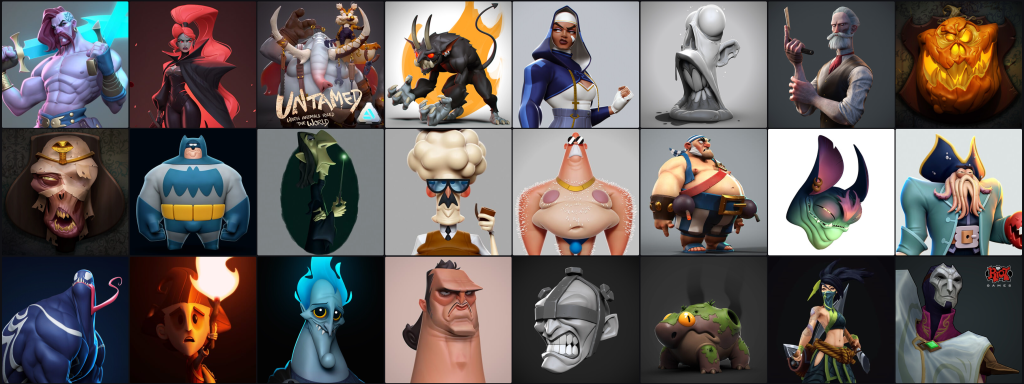
Tip #3: Show passion
Particularly for folks early in their career, recruiters are looking at more than just the quality of your work.
More than anything, they’re on the hunt for candidates with passion. Camille explains that while it’s important to have the skills to do the job, it’s not just about being the most artistically-gifted candidate.
Hiring managers are looking for you to demonstrate problem-solving, showcase your aesthetic, and prove you have the eagerness to learn.
You might not have a ton of work on paid jobs to show in your portfolio, but you can show passion by including projects you’ve done off your own back—particularly those that demonstrate a particular skill or art style you’ve been trying to master.
Jimmy Calhoun, Chair of 3D Animation and Visual Effects at the School of Visual Arts in New York City, adds that your portfolio is a way to showcase your personal journey.“If I’m putting my work in front of these people, this is my chance to tell them who I am, what I’m passionate about, and what my visual thinking process is,” he says.
Tip #4: Ideas are more important than pretty pictures
Understandably, animators starting out can have a tendency to have laser focus on producing beautiful final pictures.
If you end up there, that’s great. But of equal value to hiring managers is to get an insight into your working process.
“We really want to see how you got the picture,” says Camille. “What did you think about? Did you have thumbnails? Did you sketch? Did you draw it out?”
Demonstrating your process is important because it sheds light on the layers underneath the final result—and in a studio environment, where you’re required to take direction and refine your work, that iterative process is a big part of the job.
CCO of ElectroLeague Dave Mullins makes the same case—pretty pictures aren’t the be-all and end-all—but from a different angle. He says studios are on the lookout for great ideas—even if the execution is a little rough.
“What we were looking for at Pixar was, is there a spark of an idea here?” he explains. “Is a personality on screen? And it could be super rough. Pretty pictures are great, but an idea is better.”
Tip #5: Try to find the right fit for you
When applying for roles, do your research: find out the type of work that studio produces. Focus on the places that are the best fit for you: those that align with your visual thinking process and passion.
It’s fine to be all about blood and gore—just don’t apply to Disney or Pixar and expect a phone call.
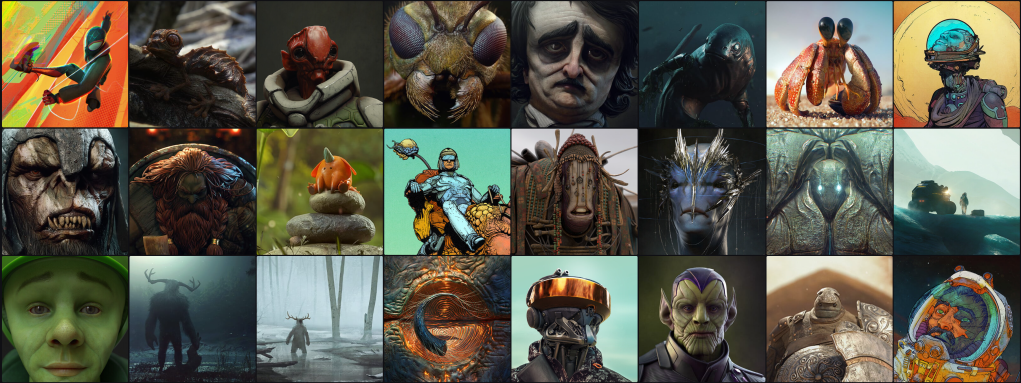
Tip #6: Check your ego at the door
You’ve finished your portfolio, impressed a recruiter, and bagged an interview. Congratulations! Now the hard work starts.
Dave reveals that the number one factor they looked for at Pixar in interviews was what the person would be like to work with. “There are so many incredibly talented people that we turned away because we just didn’t want to work with them,” he says. “We wanted people that are going to work together as a team.”
As well as being a team player, they’d look for people with a desire to learn who could leave their ego at the door. “If it’s somebody that’s hungry, they’re eager, they want to learn, they express that—that’s the best thing when you’re hiring. That wins the day, over anything.”
Camille adds that when it comes to the sorts of people hiring managers are looking for on their team, it’s people who can work with other people, who can communicate, and who can listen.
So to smash the interview, think like a team player, show your enthusiasm to learn, and be humble.
Tip #7: Teamwork experience is as important as artistic experience
Talking a good teamwork game in an interview is one thing, but being able to show evidence of it is another level.
While in education, you can build a wealth of teamwork experience—which you can and should pull out of your back pocket in interviews. “It’s important to find your people, be collaborative, do projects together, and learn what it’s like to work on a team,” says Jimmy.
For introverts, this is an opportunity to practice putting yourself out there, communicating, and building connections.
Extroverts might find the initial social aspect of project work easy—but should take the chance to practice not being the one to dominate the room (remember: interviewers are looking for team players).
As Camille says, you’re creating your first network in education; she got her first job at ILM through a friend from film school.
Tip #8: Nailing the pitch
At some point in your career, you might have to pitch a story.
With over 30 years’ experience in the industry, Dave Mullins has pitched many. In the early days, he’d put together a big pitch deck and try to get every word right.
Inevitably, the pressure of pulling this off perfectly often led to him messing it up.
His top tip for nailing pitches is to write the script, put the deck together, and read it through until you know it inside out. Then, delete all the text except for a keyword or two on each slide and tell the story in the moment while you’re presenting.
“I don’t worry if I get every detail right,” he says. “I tell it. And if I forget something, I just go, oh, I forgot a thing.”
Tip #9: Embrace the critiquing process
As an animator, your work will regularly be picked apart, and you’ll be offered suggestions for improvements.
New animators can sometimes find this process difficult.
Jimmy urges new animators to remember that supervisors and colleagues are critiquing the work—not you personally. “It’s not about you,” he says. “It’s about improving the work. And everybody there has the same desire of helping you make the work better.”
It can be hard to catch everything when you’re receiving feedback on the spot. Write notes down so you can remember it all later.
Analyze the problems that have been identified in your work and think about how you can solve them. Often, people will suggest solutions to the issues they might have spotted.
You don’t have to accept the solution suggested—but it’s worthwhile thinking about what they’ve seen and how you might find your own way of addressing it.
When it comes to critiquing the work of others, approach the situation with kindness and sensitivity—and remember that offering feedback is a good way to improve your own craft, too.
Constantly thinking about what you like and what you don’t like helps you hone your animation instincts. What worked? What can you borrow for your own process?
Tip #10: Putting forward your own ideas
When a supervisor asks you to make a change to your work, you should do it— even if you have a better idea.
“One thing you want to be really careful about is, if you get specific direction and you do something completely different because you think it’s a better idea, it might appear that you’re not following direction,” says Dave.
He explains that when he’s been in this situation in the past, he’d first do what the director had asked and hit all the notes.
Then, he’d do an alternative version—maybe one shot, maybe three different iterations—and provide that alongside the version the director had asked for.
“It was really great for the director because they go, OK, I see that you got my note, but this thing is really cool over here. And this is actually a better idea,” says Dave.
He points out that these can just be sketches and rough ideas—it doesn’t have to be perfect.
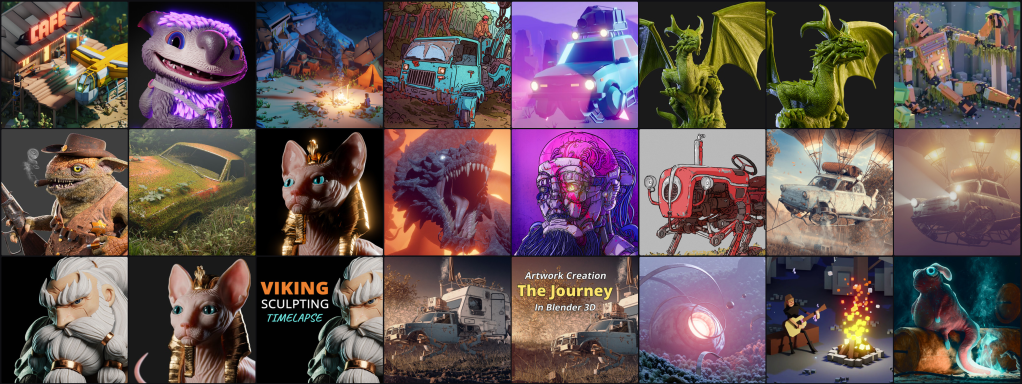
Tip #11: Consider small studios—and elsewhere
The animation industry—and the wider entertainment in general—has gone through a tumultuous time over the past year. Weathering strikes, layoffs, and canceled productions, the industry feels in a state of flux.
Dave says that out of this difficult period, one positive development is that a number of smaller studios are starting to bubble up. These studios need animators—and there’s still an insatiable and ever-growing appetite for animated content.
So while it may look hard to win a place at one of the bigger studios, it’s well worth looking at smaller studios and cutting your teeth there.
Camille goes a step further and encourages graduate animators to think outside the box entirely. “Think animation-adjacent,” she says. “Don’t just focus on the big studios. Look at advertising. Look at consumer products. These are all roles that have creative opportunities or businesses that have creative opportunities where you can hone your skills and keep practicing your craft.”
Tip #12: Be chill with recruiters when sending in portfolios
Be respectful of boundaries when you’re waiting to hear back from recruiters. Avoid emailing and phoning every day to check on your application’s progress—the hiring manager can have thousands of portfolios to go through: they’ll get to yours.
If you get an interview, be aware that the studio might be meeting a number of other candidates also—it can take days, weeks, or even months to be called up for your turn. “It’s OK to reach out a week or two later, but not every day,” says Camille.
Lastly, do not reach around and try to obtain the contact details involved in the hiring process—it’s not a good look.
Tip #13: Approach unpaid internships with caution
Unpaid internships are a tricky subject. The general consensus on the panel is that if you do take them, it should be for a limited time.
“You are worth money,” says Jimmy. “You have value. And you don’t want to undervalue, because that just hurts all the other artists.”
Camille advises that graduates shouldn’t feel awkward about discussing remuneration. “Don’t be shy to talk about money,” she says. “Be upfront about it.”
So—internships for a limited time, and then don’t give your talents away for free after that.
Tip #14: Getting onto a specific project
Found a project you’d love to be a part of? When applying to the studio working on it, it can be a good idea to include elements of that project in your art.
Don’t only include work in that style however—the studio will want to see that you can produce a range of styles (or once the project’s done, what are they going to use you for?)
Looking for your first job in animation? Start building your portfolio today on ArtStation. Get started here.























